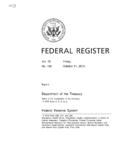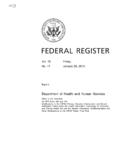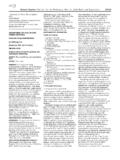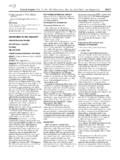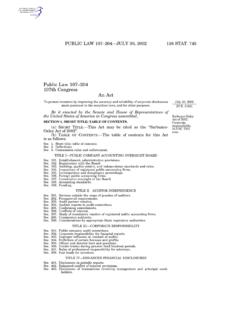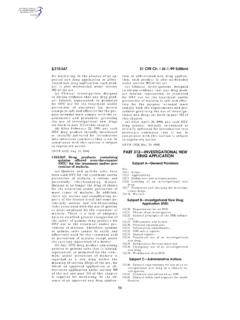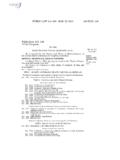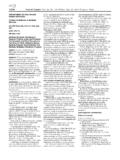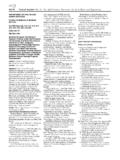Transcription of Office of Management and Budget - GPO
1 Vol. 78 Thursday, No. 248 December 26, 2013 Part III Office of Management and Budget 2 CFR Chapter I, Chapter II, Part 200, et al. Uniform administrative requirements , cost principles , and Audit requirements for federal Awards; Final Rule VerDate Mar<15>2010 18:36 Dec 24, 2013 Jkt 232001 PO 00000 Frm 00001 Fmt 4717 Sfmt 4717 E:\FR\FM\ 26 DER3tkelley on DSK3 SPTVN1 PROD with RULES378590 federal Register/ Vol. 78, No. 248 / Thursday, December 26, 2013 / Rules and Regulations Office OF Management AND Budget 2 CFR Chapter I, and Chapter II, Parts 200, 215, 220, 225, and 230 Uniform administrative requirements , cost principles , and Audit requirements for federal Awards AGENCY: Executive Office of the President, Office of Management and Budget (OMB).
2 ACTION: Final guidance. SUMMARY: To deliver on the promise of a 21st-Century government that is more efficient, effective and transparent, the Office of Management and Budget (OMB) is streamlining the federal government s guidance on administrative requirements , cost principles , and Audit requirements for federal awards. These modifications are a key component of a larger federal effort to more effectively focus federal resources on improving performance and outcomes while ensuring the financial integrity of taxpayer dollars in partnership with non- federal stakeholders.
3 This guidance provides a governmentwide framework for grants Management which will be complemented by additional efforts to strengthen program outcomes through innovative and effective use of grant- making models, performance metrics, and evaluation. This reform of OMB guidance will reduce administrative burden for non- federal entities receiving federal awards while reducing the risk of waste, fraud and abuse. This final guidance supersedes and streamlines requirements from OMB Circulars A 21, A 87, A 110, and A 122 (which have been placed in OMB guidances); Circulars A 89, A 102, and A 133; and the guidance in Circular A 50 on Single Audit Act follow-up.
4 Future reform efforts may eventually seek to incorporate the cost principles for Hospitals in Department of Health and Human Services regulations. Copies of the OMB Circulars that are superseded by this guidance are available on OMB s Web site at http:// The final guidance consolidates the guidance previously contained in the aforementioned citations into a streamlined format that aims to improve both the clarity and accessibility. This final guidance is located in Title 2 of the Code of federal Regulations. This final guidance does not broaden the scope of applicability from existing government-wide requirements , affecting federal awards to non- federal entities including state and local governments, Indian tribes, institutions of higher education, and nonprofit organizations.
5 Parts of it may also apply to for-profit entities in limited circumstances and to foreign entities as described in this guidance and the federal Acquisition Regulation. This guidance does not change or modify any existing statute or guidance otherwise based on any existing statute. This guidance does not supersede any existing or future authority under law or by executive order or the federal Acquisition Regulation. DATES: Effective Date: This guidance is effective December 26, 2013 . Applicability Date: This guidance is applicable for federal agencies December 26, 2013 and applicable for non- federal entities as described in this guidance.
6 FOR FURTHER INFORMATION CONTACT: OMB will host an informational webcast with the Council on Financial Assistance Reform and key stakeholders. Please visit for further information on the time and date of the webcast and on the Council on Financial Assistance Reform. For general information, please contact Victoria Collin or Gil Tran at the OMB Office of federal Financial Management at (202) 395 3993. SUPPLEMENTARY INFORMATION: I. Objectives and Background A. Objectives The goal of this reform is to deliver on the President s directives to (1) streamline our guidance for federal awards to ease administrative burden and (2) strengthen oversight over federal funds to reduce risks of waste, fraud, and abuse.
7 Streamlining existing OMB guidance will increase the efficiency and effectiveness of federal awards to ensure best use of the more than $500 billion expended annually. This reform builds on two years of work by the federal government and its non- federal partners: state, and local governments, Indian tribes, institutions of higher education, nonprofit organizations, and the audit community to rethink and reform the rules that govern our stewardship of federal dollars. The revised rules set standard requirements for financial Management of federal awards across the entire federal government.
8 These reforms complement targeted efforts by OMB and a number of federal agencies to reform overall approaches to grant-making by implementing innovative, outcome-focused grant- making designs and processes in collaboration with their non- federal partners, in accordance with OMB guidance in M 13 17 Next Steps in the Evidence and Innovation Agenda . This new guidance plays an important role in fostering these and other innovative models and cost -effective approaches by including many provisions that strengthen requirements for internal controls while providing administrative flexibility for non- federal entities.
9 These provisions include mechanisms such as fixed amount awards which rely more on performance than compliance requirements to ensure accountability, and allow federal agencies some additional flexibility to waive some requirements (in addition to the longstanding option to apply to OMB to waive requirements ) that impede their capacity to achieve better outcomes through federal awards. This guidance will provide a backbone for sound financial Management as federal agencies and their partners continue to develop and advance innovative and effective practices.
10 This reform of OMB guidance will improve the integrity of the financial Management and operation of federal programs and strengthen accountability for federal dollars by improving policies that protect against waste, fraud, and abuse. At the same time, this reform will increase the impact and accessibility of programs by minimizing time spent complying with unnecessarily burdensome administrative requirements , and so re- orients recipients toward achieving program objectives. Through close and sustained collaboration with federal and non- federal partners, OMB has developed ideas that will ensure that discretionary grants and cooperative agreements are awarded based on merit; that Management increases focus on performance outcomes; that rules governing the allocation of federal funds are streamlined, and that the Single Audit oversight tool is better focused to reduce waste, fraud, and abuse.

